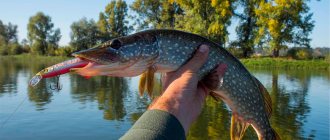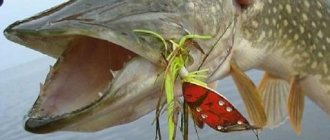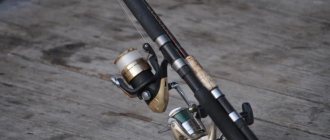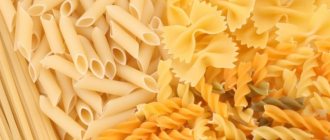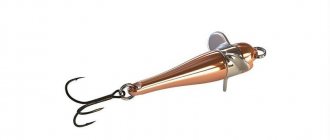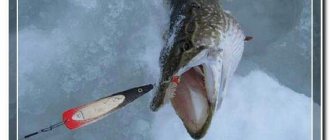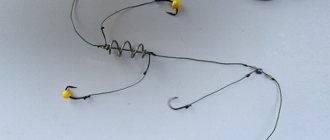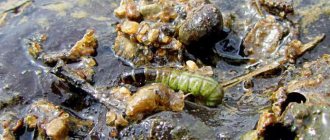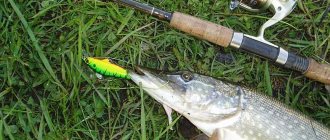Buy quality products at affordable prices in the best fishing online stores
. Give gifts to yourself and your loved ones!
we are in social networks
— subscribe to us on Facebook, Youtube, VKontakte and Instagram. Stay up to date with the latest site news.
The “Croatian Egg” bait, popular among spinning anglers, is not so easy to find in fishing stores. And this is understandable, since it is not often mass-produced in a factory, but is made by hand. Naturally, demand exceeds supply, and therefore fishermen try to make their own bait.
What it is
Bumble Lure or, in everyday life of spinning anglers, the Croatian egg wobbler is classified as a type of clearly defined surface bait. The product is shaped like an egg, which is why it received a slang nickname in addition to the country where it was invented. In the sharp part of the form there is a hook with a long fore-end, and in the front blunt part a fastening ring is built into the body of the simulator. The original surface bait is made of balsa, a light but non-porous wood. Its balancing is done in such a way that the product is only half the height of its body immersed in the water, constantly holding the tip of the hook above the surface of the water. It is this feature that ensures the high passability of the simulator on an overgrown water surface without snagging or picking up debris on a hook.
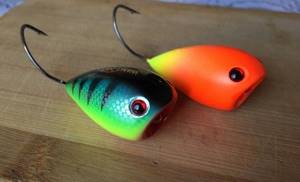
For attractiveness and contrast, the body of the nozzle is painted in various colors, adding holographic stickers in the form of a pair of fish eyes to the front part. Wobblers of this type have several standard sizes with different load sizes.
Some tips from experienced fishermen
Those who have already used the “Croatian egg” recommend:
- When planning to use bait to catch pike, choose a larger hook. Otherwise, the pike may simply bite the “egg” or even, after dragging it, bend the spinning rod into an arc, but not be detected.
- Make a small hole in the epoxy resin under the “muzzle” of the bait, which will improve its properties.
- In addition, it should be taken into account that any improvements in the non-catching ability of the “Croatian egg” reduce its hooking rate, therefore, in reservoirs where the amount of algae is not critical, you should not try to upgrade the bait.
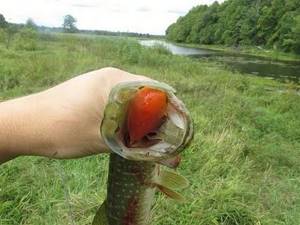
Now you know how to make a “Croatian egg” with your own hands. With the instructions presented above, solving this problem will not be difficult and you will be able to verify the effectiveness of your homemade bait on the very first fishing trip where you want to try it.
Types of bait
In the process of its evolution, the Croatian egg for pike and perch has undergone a number of changes in type and now the imitation is divided into two specific types, which have peculiar and easily noticeable differences.
A glider is a classic, original type of surface wobbler that glides along the surface of the water when pulled. Thanks to the hook that is constantly raised from the water, gliders are not afraid of any surface grass, which is why this type of product is recommended for use in heavily overgrown reservoirs.
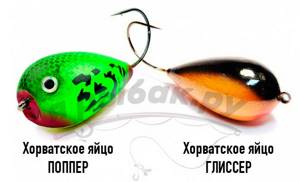
Popper is the second type of surface wobbler. Its egg-shaped shape from the front part at the point where the fastening ring exits the body has a flat or concave cut into the body. A design of this type also has one hook in its rear part, but unlike the classic form, when inserted, the product makes a squelching sound, like a regular popper, thereby attracting predatory fish to the fishing zone. This type is recommended for fishing in open water bodies.
What you need to make your own Croatian bait
To create the fishing tackle invented by Branimir Kalinic, you will need:
- cork or champagne cork;
- single hook;
- round nose pliers or pliers;
- sheet lead;
- “emery wheel” or file;
- metal wire with a diameter of 0.5 mm;
- glue "Moment" or any other cyanoacrylic type.
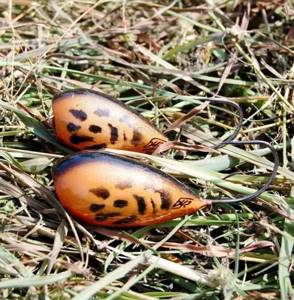
Advantages and disadvantages
Fishing with a Croatian egg in some spinning fishing conditions has significant advantages in use when compared with other types of wobblers of a similar type. In particular, the positive qualities of both the glider and the popper include:
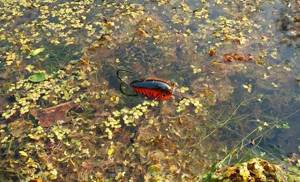
- high passability of the simulator through water bodies overgrown with surface algae, the so-called toad grasses and shallow ponds.
- The location of the hook above the water surface completely eliminates snags and the collection of all kinds of plant debris.
- high aerodynamic qualities of the product and its range with high casting accuracy parameters.
- When retrieving, vibration waves are created that arouse the interest of even passive fish that attack from long distances.
- Fishing with the use of surface non-hooking is distinguished by entertainment and excitement, and also brings trophy fish into the catches.
To fully assess the performance and effectiveness of the product, it is worth mentioning the negative side of the practical use of this wobbler, namely:
- a seasonal and specific attachment that works only during warm water periods, mostly in summer and early autumn.
- the fragility of the product, which even with a one-time pike attack can be seriously damaged, which is expressed not only in the loss of appearance, but also in the loss of unique balancing parameters, and, consequently, the very quality of the game and the attractiveness of the simulator.
- One of the significant drawbacks is the low bite rate, which results in only 30% of positive trophy hits. This is caused by the presence of only one hook in the body of the product and frequent misses by fish that do not clearly see the supplied bait.
Catching pike with a Croatian egg
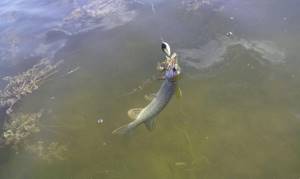
Catching pike with a Croatian egg begins during the summer season, when a stable water temperature is established, and the predator leaves for its permanent habitat in overgrown areas of the reservoir. As a rule, these are shallow water areas of standing or flowing, weakly flowing reservoirs, closed ponds, or river and lake backwaters.
Important! The ideal places for fishing with Croatian are the surface covered with duckweed, with gaps of open windows of clean water.
In shallow waters overgrown with grass and water lilies, only this type of non-hooking line can be used to qualitatively fish promising points where a predator stands, without fear for the comfort and convenience of fishing. Fishing is carried out throughout the daylight hours, changing the color scheme of the bait based on the intensity of illumination. In cloudy weather, bright and catchy colors are used; in sunny weather, the use of a natural color spectrum is more promising. Fishing practice has shown that fishing for pike with eggs is most effective in clear and sunny weather.
Features of fishing and used wiring
To properly fish with a Croatian egg, you need to know the main types of maneuvers for this fishing tool, depending on the conditions on the reservoir and the activity of the predator being caught. There are three main wiring techniques for working with a Croatian.
The main type of wiring is jerking without hooking. The technique is similar to serving such surface imitators as a walker or a classic popper, completely repeating the technique of serving them with small constant jerks.
Uniform wiring, the speed of which depends on the degree of overgrowth of the surface of the reservoir affecting the movements of the bait. The thicker the thickets, the slower the speed of the unhooked line. This reduces the number of misses of the attacking predator.
Stop-and-go style fishing is effective in places with gaps of clear water, where they pause when fishing with Croatian. The pause time depends on the activity of the predator; the more passive it is, the longer the pause is and vice versa.
One of the features of fishing is that, having noticed the movement of the fish towards the bait, the spinner should not stop leading it in the same style in which the wiring began, continuing to perform the animation until the predator fully exits, capturing the bait in the mouth and subsequent notching. In the case when the length of the cord no longer allows you to complete the lead, and the fish is on the attack, it is recommended to stop the egg by twitching the simulator in place with the tip of the rod until it is picked up by the fish.
How to improve the properties of bait?
Although the Croatian egg is one of the most effective non-snagging surface baits, it can be upgraded.
Read more
How to catch fish with a vibrotail?
In order to increase the attractiveness of the bait for fish, the hook can be equipped with a simple or double twister. In addition to the twister, octopus and silicone fringe for spinnerbaits work well.
To improve the permeability of the bait in the grass and reduce the number of snags, it is enough to protect the hook with a flexible strip of plastic (for example, cut from a PET bottle), a loop of elastic wire or thick rigid fishing line. The protection is glued into a hole pre-drilled in the body of the bait. It is better to install the protection before painting the bait, so as not to damage the integrity of the paintwork.
How to make a Croatian egg with your own hands
The original Bumble Lure non-hooking wobbler is a handmade product that has a fairly high cost, and purchasing such a fishing tool is not always easy. Spinning fishermen have more access to analogues of baits produced by other well-known fishing brands. In particular, the Croatian german egg is quite close in its performance characteristics to the original instruments, and has a lot of interesting color variations, sizes and loads.
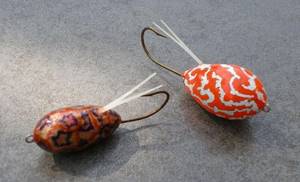
The fisherman needs to know that there is no prohibition on independently making a product similar to bait, and if you have certain skills and desire, you can make a Croatian fish yourself. This matter will be facilitated by our further information, which includes useful recommendations on how to carry out the work and the availability of the tools necessary to make your wishes come true.
Manufacturing
You can make your own Croatian egg from several types of materials. For these purposes, it is best to have a cork or a wooden blank made of linden, pine, birch and alder. Tools you will need are a hacksaw, a grinder, a vice, and a screwdriver. The main difficulty in manufacturing is the processing of the workpiece, which must be brought to the shape of an egg of the desired size. This is achieved by initially cutting off excess material, followed by finishing to the desired shape by grinding.
Sanding begins with coarse-grain sandpaper, gradually moving to finer abrasive fractions, finishing with fine sanding. If processing a cork workpiece does not take a lot of time, then processing wooden samples manually takes much longer and, if it is possible to produce the form on a lathe, it is better to use this option.
Loading
The correct operation of the unhooked bait, its balance and the presence of aerodynamic qualities that satisfy the casting range and accuracy are achieved by proper loading of the bait. Depending on the location of the center of gravity in the workpiece, the main performance characteristics of the tool will be determined.
Important! To load homemade products, lead pellets are used, which are inserted into the body of the workpiece.
To mount the weights, a slot is made in the workpiece from one end point of the apex to the other. The boundary of the cut line should be the central axis of the workpiece. Before the actual loading device, a hook with a long fore-end is mounted into the cut. The fastening eye of the hook is connected to a twisted wire, which will become the fastening loop of the egg itself. Epoxy resin is used to fix the hook connected to the wire loop. The tip of the hook should be turned towards the back of the bait being made. The length of the hook exiting the workpiece is taken to be at least 30 mm. Lead pellets are placed along the cutting arc, placing heavier weights in the center, lower part of the form, and lighter weights at the tops of the workpiece. Fixing the loads in the body of the material is done by filling the void with epoxy resin, followed by cleaning the frozen edges flush with the main surface.
Load test
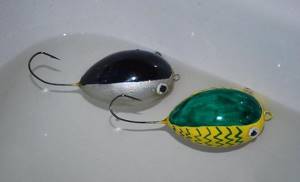
A do-it-yourself simulator made of wood or cork must be tested after rumping. This operation is immediately carried out on a flat table, and subsequently in any container filled with water.
Important! The workpiece placed on the table must be held by weights in a vertical position with the tip of the hook raised upward, without falling on its sides when it is slightly rocked.
After successful testing of the so-called tumbler, the loaded product is lowered into water, after which its draft is examined. A properly loaded body should sink into the water just below the center line, with the hook tip above the surface of the water. When moving in water, the simulator should not fall on its side; it should move along a straight path.
Finishing
After test tests confirming the required characteristics of the product, the workpiece is subjected to rough finishing, which eliminates the shortcomings associated with moisture absorption of the material, and also gives the surface greater density and its readiness for final finishing painting. For these purposes, a home-made Croatian is treated over its entire surface with a thin layer of epoxy resin. After the layer has completely dried, sanding with fine abrasive sandpaper brings the surface to a matte state. After rough processing, a visual inspection makes sure that there are no pores on the surface and in the places where the hook and fastening loop exit the body and proceed to final painting.
Coloring
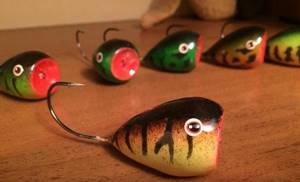
Painting is done in two layers, the first of which is done with white paint. After perfect drying, they begin to apply the main war paint. For these purposes, it is best to use fluorescent aerosol paints. Any shade of them looks quite contrasting against the background of the sky and aquatic vegetation. All kinds of stencils are used to apply drawings. In particular, nylon mesh is excellent for simulating scales.
Holographic stickers, especially the fish-eye ones, can be purchased at many fishing stores and applied to an already painted bait using quick-drying glue. After painting, the wobbler is weighed to finally determine its mass and tested in real conditions, working out the nuances of wiring an exclusive product directly on a pond.
Manufacturing
Fishermen prefer to make a Croatian egg with their own hands, since it is simply not possible to buy such bait in a store. For reasons unknown, such bait can only be found in online stores, and even then, it will be homemade.
The manufacturing process itself is quite simple, the main thing is that you have all the necessary tools and materials:
- Wine cork.
- File.
- Big single.
- Pliers.
- Hacksaw for metal.
- Stainless steel wire (diameter approximately 0.5 millimeters).
- Lead.
- Waterproof, quick-drying adhesive.
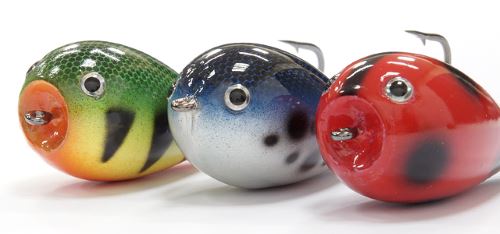
First you need to take a cork and, armed with a file, make something out of it that looks like an egg. Then you need to cut the bait exactly in the center with a hacksaw, starting from the tail and ending with its front part. The cutting width should be about 2.5 millimeters. When using a thick hook, the cut can be slightly wider.
Loading
When the cork has received the shape of an egg, the most interesting part begins - loading it and installing the hook. This is not too difficult, but a painstaking task; first you need to arm yourself with a single hook and a small piece of wire.
Knitting wire is best suited for such purposes, since this material is easily deformed under physical influence
Please note that you need to take hooks with a straight shank; if your single hook has a slight bend, it can be easily straightened out with pliers
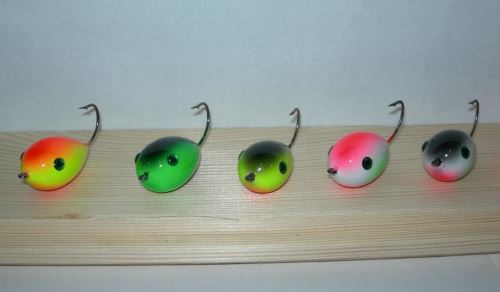
Then you need to form a loop at the end of the wire and attach a hook to it. Now try on the resulting blank for the bait
Please note that the blank should be approximately 2/3 of the body length of the bait itself
Now you need to take sheet lead 1 millimeter thick and cut a strip about 10 millimeters wide and the long, even length of the body of the bait itself. Now you need to wrap this strip along the hook blank on the wire, bending it in half.
Load test
It is best to check the buoyancy of the bait at home in a basin of water, since fishermen often overload the Croatian egg with their own hands and get upset when they arrive at the pond. But for the purity of the test, it is necessary to collect all the bait. It is necessary to insert the resulting blank from the lead and hook into the cut of the egg.
It is advisable to ensure that the workpiece does not wobble inside the cut and fits tightly into it. After assembly, you need to lower the resulting bait into the water. The main thing is to choose such a weight of the load so that the hook tip points upward, and the bait itself takes a horizontal position and is half immersed in the water.
It’s easy to guess that by changing the weight of the lead plate you can adjust the immersion depth of the bait. Fortunately, lead is easy to process, so it won’t be too difficult to bite off a small piece or add a little.
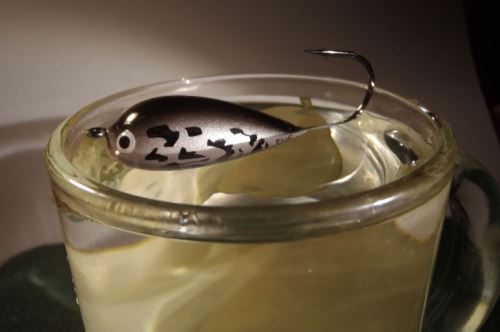
If you managed to achieve the correct position of the bait in the water, then the Croatian egg is almost done with your own hands, all that remains is to bring the bait into proper shape. First you need to fill the cut with glue.
Finishing
In its resulting form, the bait is unlikely to attract a predator, so it still needs to be further trimmed and decorated. Any bait should have an attractive and neat appearance, and the Croatian egg is no exception to the rule. Typically, the egg is treated with epoxy resin to achieve the desired appearance.
But first of all, you should thoroughly treat all joints in the bait to prevent water from getting there. The strength and reliability of the entire structure as a whole is ensured by the good fluidity of the resin, which allows it to easily penetrate into the smallest voids in the body of the bait. After the bait is completely dry, you can begin sanding with sandpaper.
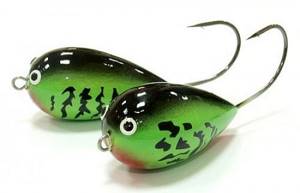
Coloring
Many fishermen refuse painting altogether, saying that a Croatian egg with their own hands attracts predatory fish by its movement on the surface, but not by its appearance. But an attractive appearance will never be superfluous, so it is better to decorate the bait to ensure its greater effectiveness.
Most often, the bait is decorated with a random design and it is not at all similar in appearance to the usual fish. Bright and catchy colors used when painting bait do not negatively affect the activity of the predator, so they are often used.
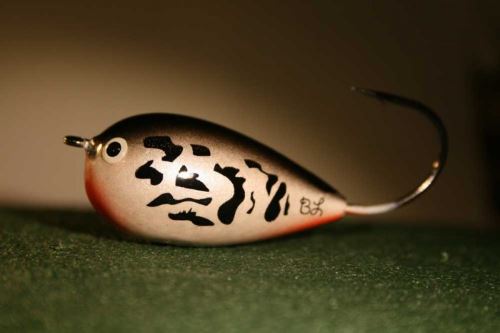
Paint the bait with various colors. Fishermen even use washable paints, but to avoid blurring the design, the bait is coated with colorless varnish. Fishermen who make eggs at an amateur level prefer to paint the bait with regular nail polish. It is water resistant, cheap and holds up well.

